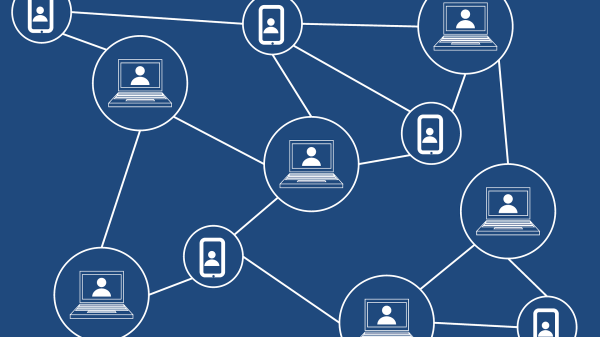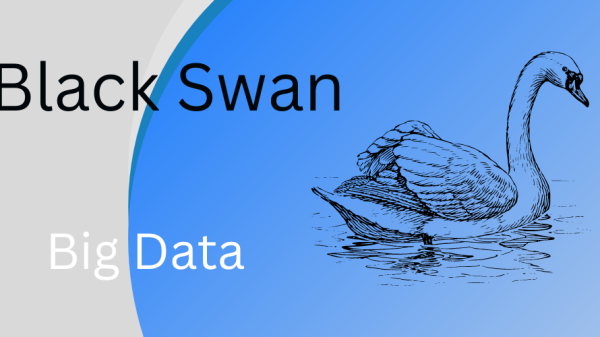By Dare idowu-Agida September 14, 2022
The decentralized world of cryptocurrencies is gaining traction and, many a time, described as a “new gold rush.” The blockchain technology behind it is disrupting the financial sector generally, but how is this technology improving Ethereum and making its blockchain better?
Key Takeaways:
- Polygon is an interoperability protocol and architecture for the Ethereum blockchain.
- Ethereum enhances developers to realize the full potential of decentralized money by creating decentralized applications and coding smart contracts.
- The MATIC token that powers the Polygon platform was designed to link and build Ethereum-compatible applications and blockchains.
Polygon vs. Ethereum: Growth Comparison
Polygon is a new-age blockchain company. It was established in 2017 in San Francisco, California. Interestingly, it’s not just making a home for itself among blockchain systems. Still, it also aims at being beneficial to all the stakeholders who could be using Ethereum blockchain in their businesses and services.
Polygon is the ERC20 token that serves as a medium of exchange for Polygon Currency, an Ethereum-based crypto asset. Polygon works to enable entrepreneurs, builders, developers, and organizations to benefit from Ethereum’s network effects by using it as a standard for interoperability, security, and flexibility. Unlike other blockchain-based payment systems, Polygon isn’t limited to one chain or one coin. It’s built for long-term value creation on any blockchain via open-source APIs.
Literarily, Polygon is building a future where everyone can use cryptocurrencies. Whether you are an individual who wants to use stable tokens or applications that make transparency, or you’re a developer who needs to understand how blockchains work to build on them — Polygon is here for you!
Briefing on How it Began.
Ethereum is in a unique position of being both highly scalable and decentralized. “Ethereum is not just another altcoin: it’s an entirely new platform,” they said. – cointelegram
Decentralization makes a network secure. There are many blockchains out there that fit into this category, but Ethereum is one of the most popular. Polygon has improved Ethereum by recommending an optimal algorithm to help reduce network problems by improving scalability and transaction fees.
As Polygon continues discussing its research on improving Ethereum, we expect even more improvements for this popular blockchain network! As of 2018, Ethereum can process only 15 transactions per second. A 2nd-layer scaling solution will be required to help clear the current bottleneck in its network. Vitalik Buterin has stated that sharding is not a scaling solution but rather an improvement to the efficiency and usability of the platform.
What is a polygon?
The Polygon portal says, “Polygon believes in Web3 for all.” Ethereum handles 15 transactions per second, which is very low compared to other alternatives like Solana, Polkadot, and Cardano, which do many transactions in the same time frame. The network isn’t amicable because you’re effectively bidding for options against everyone else who wants to enter a transaction, which means its expense is relatively high.
How does Polygon work?
In 2017, three Indian developers started to find a solution to the Ethereum problem. Ethereum Polygon is a layer 2 scale platform that allows Ethereum base applications to tackle the issues of Ethereum. Instagram, Adidas, Prada, etc., recently launched their NFT on Polygon. The network hosts over 19,000 Dapps, and many industry heavyweights have migrated from Ethereum to the Polygon blockchain. In the Polygon network, the coin is still called the Matic coin.
Why does Polygon use Ethereum?
- Polygon is built on top of Ethereum.
- Polygons not only increase speed or cut transaction fees but also create protocols that link Ethereum Virtual Machine (EVM) compatibility with each other.
- Polygon does not compete with Ethereum; instead, Polygon is dependent on Ethereum to function.
- The developers can access the benefit using other blockchain platforms for a meager fee.
- Polygon network infrastructure handles larger transaction volumes with the Ethereum blockchain.
What makes Polygon special?
MATIC is staked on the Polygon blockchain, allowing users to earn annually for validating transactions on the blockchain. The developers have stack solutions on a single network, which gives developers control and customization for scaling to any application. Any standalone sidechain would be a dedicated PoS bridge network on the Ethereum Blockchain.
Polygon layer 1 or 2
Polygon Layer 2 scaling solution is found on Ethereum Layer 1, while Polygon is built on top of the Ethereum blockchain. A Layer 1 solution will alter the original blockchain’s rules and operations. A parallel network will employ a separate parallel network to enable transactions away from the main chain. Layer 1 blockchains include Bitcoin and Ethereum.
How do Layer 2 scaling solutions work on Polygon?
As previously stated, Layer 2 solutions rely on supplementary networks operating parallel or independently of the main chain. It is symbolic of Ethereum and Polygon blockchains.
Rollups: – Zero-knowledge rollups combine off-chain Layer 2 transactions and present them as a single transaction on the main chain. A bridging smart contract holds assets on the original chain, and the smart contract certifies the rollup is working correctly. It maintains the original network’s security while benefiting from a less resource-intensive rollup.
Sidechains: – Sidechains are autonomous blockchain networks with validators. The main chain’s bridge smart contract does not validate the sidechain network. It would help if you trusted the sidechain’s ability to govern assets on the primary chain.
State channels: – Two-way communication environment between parties. The parties encrypt a portion of the underlying blockchain and link it to an off-chain transaction channel.
Nested blockchains: – The system is based on a collection of subsidiary chains that sit above the primary “parent” chain. Day-to-day operations are outsourced to “child” chains, which return processed transactions to the main chain upon completion.
How is Polygon related to Ethereum?
The MATIC token powers the Polygon platform. Literarily, created to link and build applications and blockchains. Polygon employs a modified proof-of-stake consensus technique. MATIC tokens manage, secure, and pay transaction fees on the network.
The Polygon Proof of Stake
A Layer 1 blockchain like Ethereum might become sluggish and expensive to use as the number of users and simultaneous transactions grow. It is a norm for blockchains that employ Proof of Work rather than Proof of Stake. Polygon uses proof of stake, which makes it faster, while the Ethereum protocol uses proof of work.
Polygon blockchain vs. Ethereum
Polygon is focused on low fees, quick throughput, and scalability. In contrast, the Ethereum blockchain is focused on functionality and security. It is in the news that Ethereum will be switching to proof of stake (PoS) by mid of September 2022.
Polygon Transaction Speed Table
Etherium is unquestionably the market leader in DeFi and cryptocurrency ventures. The Polygon PoS provides a transaction speed of around 72000 tx/sec, compared to Ethereum’s 15 transactions/sec.
| Name | Ethereum Blockchain | Polygon Blockchain |
| Architecture | Stateful architecture | Multichain architecture |
| Scalability | Limited Scalability | Multichain solutions offer better scalability |
| Transaction Speed | 15 TPS | 72,000 TPS |
Polygon vs. Ethereum: Growth Comparison
- Polygon is ranked 13th in market capitalization among the top cryptocurrencies. It is currently worth $ 1 billion, making Ethereum the second-largest cryptocurrency after Bitcoin. It is currently worth more than $ 243 billion.
- Polygon is an ERC20 token built on Ethereum. Ethereum is the mother blockchain that allows Polygon to function.
- Polygon enables interoperability and scalability between Ethereum and other blockchains. Ethereum aids the development of decentralized products such as NFTs and dApps.
- Polygon is a blockchain network that uses Proof of Stake (PoS). Ethereum is still a blockchain network based on Proof of Work (PoW) (although Ethereum 2.0 is not that far off).
- You can stake Polygon MATIC tokens to receive regular rewards. You can’t stake Ethereum tokens directly except through the DEX network.
- An average network fee of Polygon in 2022 will move from $0.0005 to $0.2. It has been rising but is predicted to rise to $0.66 in July 2022. messari.io shows ETH’s average transaction fee in August is $1.64.
Frequently Asked Questions
#1. Question: Is it better to use Polygon or Ethereum?
Answer: While the Ethereum platform is focused on functionality and security, Solana and Polygon are focused on low fees, quicker speeds, and scalability.
#2. Question: What is the advantage of Polygon (MATIC)?
Answer: Polygon decreases gas costs while improving transaction speed. The Polygon protocol handles 72,000 transactions in the same time frame.
#3. Question: What is the relationship between Polygon and Ethereum?
Answer: MATIC tokens manage, secure, and pay transaction fees on the Polygon network. Polygon employs a modified proof-of-stake consensus technique.
#4. Question: Is Polygon’s address the same as Ethereum’s?
Answer: Polygon and Ethereum utilize the same format for wallet addresses, and you could sign transactions for both chains with the same private key.
#5. Question: How does Polygon Matic make money?
Answer: The only way to make money on MATIC is staking. Validators are in charge of verifying recent transactions and adding them to the blockchain.
Wrap Up
Fundamentally and technically, Ethereum and Polygon are both excellent networks. As cryptocurrencies become more widely accepted in our financial system, the prices of these two blockchains will rise in close partnership.
Cryptocurrency, DeFi, and NFT are unregulated and potentially harmful. So, losses sustained due to such transactions are the user’s responsibility.






